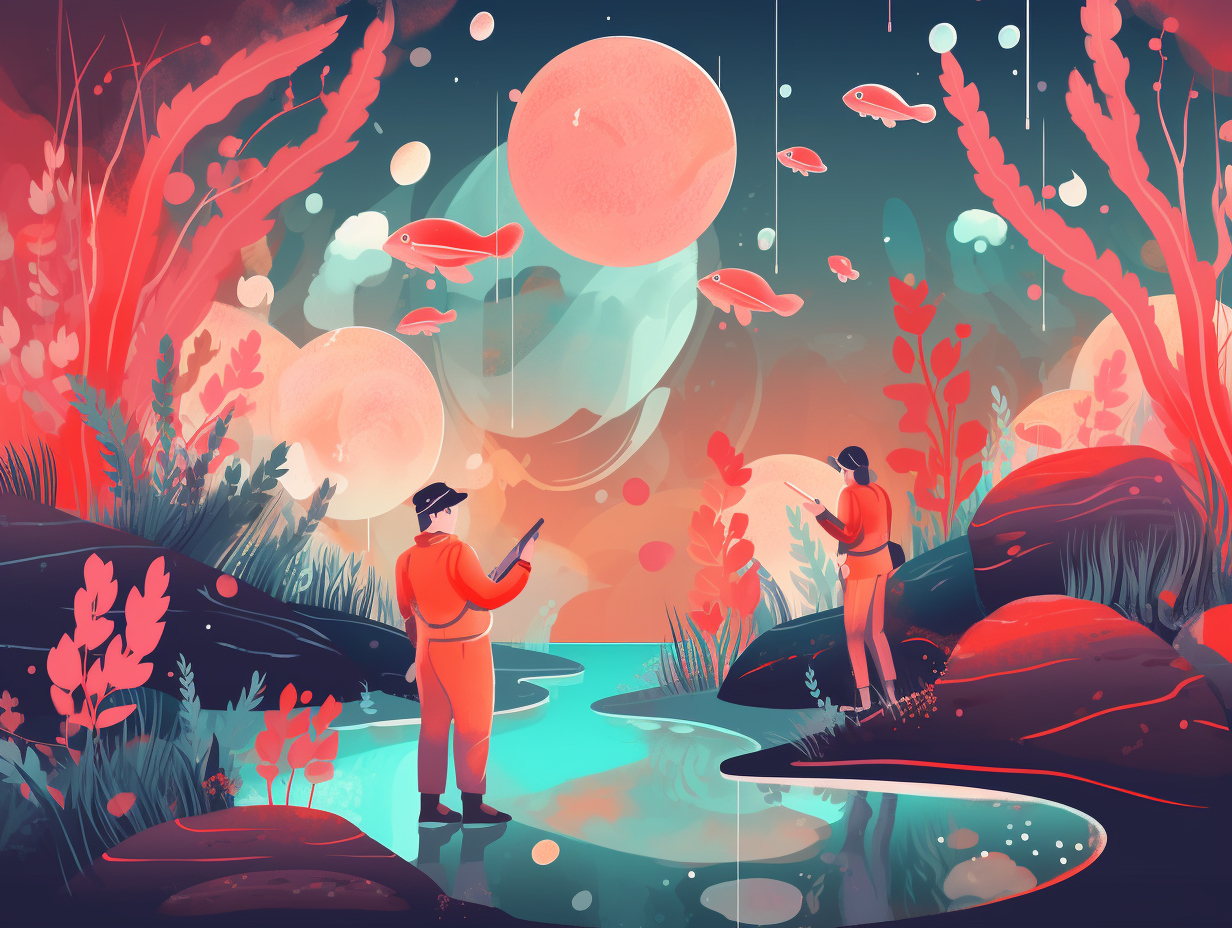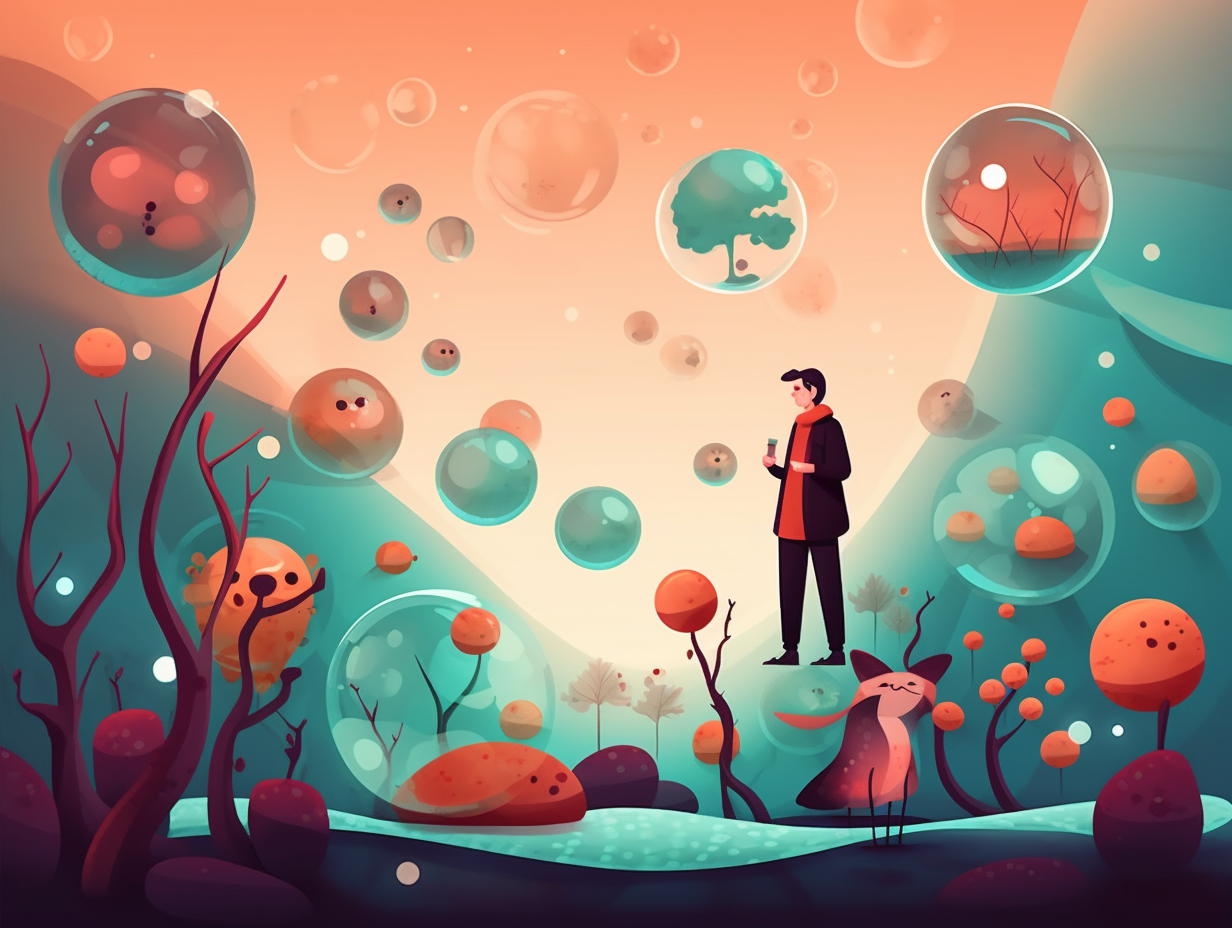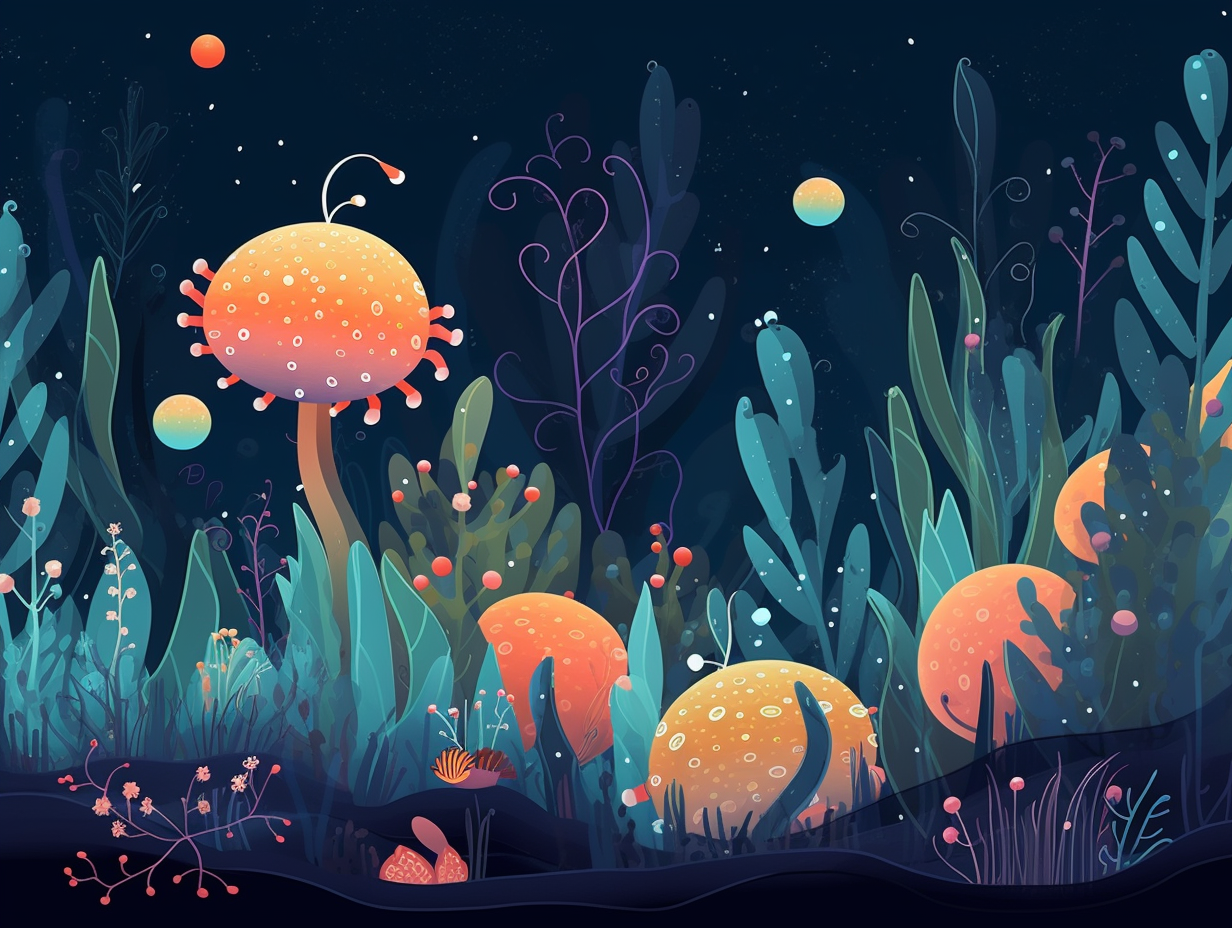Discover the Microscopic World: Top 11 Amazing and Fun Facts about Eubacteria

1. The Incredible-Soil-Water-Cleaning-Avengers
If eubacteria were a superhero, they'd be known as "The Incredible-Soil-Water-Cleaning-Avengers": Some species like Pseudomonas putida have the power to break down toxic chemicals such as benzene and toluene, and are often used in environmental cleanup efforts called bioremediation to detoxify polluted soil and water.
Source => diffen.com
2. Bacterial Perfume Factory
Are eubacteria secretly running a perfume factory for Mother Nature?: In a surprising twist of biotechnological wizardry, scientists have genetically engineered certain eubacteria to produce customized fragrances and flavors such as vanillin and the prized ambergris musk components found in sperm whale ambergris, raising the possibility of creating our own bacterial perfume labs in the future.
Source => thedailystar.net

Discover the hilarious secret behind blue cheese's unique aroma and maturation process, starring Penicillium mold and a comedy-loving bacteria! 🧀😂
=> Fun Facts about Bacteria
3. Original Color Me Crazy Club
You know how chameleons are known for their groovy color-changing skills, well, eubacteria are the original color me crazy club: these microscopic party animals can produce a spectacular range of pigments, derived from metabolic pathways, which help them thrive in their environments while packing a punch with antimicrobial and anticancer properties!
Source => frontiersin.org
4. Breath-Holding Masters
When eubacteria hold their breath and decide to "play dead," they might actually give possums a run for their money: Spores of eubacteria have the impressive ability to evaluate their surroundings without needing any metabolic activity, using stored electrochemical energy to perform a complex environmental analysis, showcasing an intelligence similar to that of neurons in the brain.
Source => today.ucsd.edu

5. Apocalypse-Ready Microscopic Badasses
From tangoing with lava monsters to shrugging off a nuclear apocalypse, some eubacteria are ready for anything life - or destruction - throws their way: These microscopic badasses can withstand extreme temperatures and radiation by forming endospores, protective structures allowing them to play dead for thousands of years until the coast is clear for favorable conditions to flourish again.
Source => encyclopedia.com
6. Growth Habit Peep Show
When eubacteria aren't busy playing the eco-Avengers and cleaning up mankind's chemical spills, they're letting science peep into their private lives and study their growth habits: Scientists have developed a computational model that predicts E. coli bacteria's reproduction and growth under specific conditions with over 98% accuracy, which can be used to improve both our environment and health.
Source => pnnl.gov
7. Boiling Heat and Radioactive Disaster Survivors
It's a bird, it's a plane, it's… a super bacterium? Able to withstand boiling heat and radioactive disasters, these endospore-forming Eubacteria laugh in the face of danger: In all seriousness, Eubacteria can form incredibly tough endospores, which are capable of surviving high temperatures, radiation, and can even endure boiling for hours, earning them the title of one of the most resilient organisms on Earth.
Source => biologydictionary.net
8. Nitrogen Club Party Animals
Who knew eubacteria were such party animals, hitting the nitrogen clubs for some aerobic dancing? It turns out: they're essential for converting ammonia into nitrite during the nitrification stage of the nitrogen cycle, making nitrogen compounds available for biological processes.
Source => nature.com
9. Unsung Eco-Warriors
While they might not wear capes or spandex, eubacteria are quietly playing their part as unsung eco-warriors, munching away on harmful gases and wiggling in the dirt to help our planet breathe a little easier: Methanotrophic bacteria consume potent methane and turn it into less harmful carbon dioxide, while nitrogen-fixing bacteria found in legume roots capture atmospheric nitrogen and convert it into a usable form, reducing our reliance on synthetic fertilizers that contribute to greenhouse gas emissions. So next time you hear about eubacteria, give them a round of pea-plause!
Source => journals.asm.org

10. Microscopic Group Chat Experts
You know the saying, "there's strength in numbers"? Well, eubacteria took this motto quite literally and developed their own microscopic version of a group chat: quorum sensing! The fun part is, these microorganisms use autoinducers to produce signals in their colonies, coordinating behaviors like sporulation, bioluminescence, virulence, conjugation, competence, and biofilm formation. And who says bacteria don't know teamwork, right?
Source => asm.org
11. Arctic-Loving Frosty Contenders
Move over, Ice Man: There's a new frosty contender in town with a knack for thriving in arctic conditions! Meet the Psychrophiles, a type of eubacteria that sport fancy nutrient transporters, antifreeze proteins, and cold-active enzymes to live it up in subzero temperatures. Making themselves right at home among sea ice and glaciers, they're sparking scientific curiosity for their potential to reveal the secrets of extraterrestrial life and lend a helping hand in both industrial processes and medicine.
Source => kids.frontiersin.org
Related Fun Facts




















